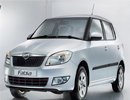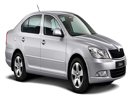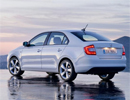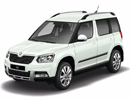|
Klement returned his bicycle to the manufactuers, Seidel and Naumann, with a letter, in Czech, asking for them to carry out repairs, only to receive a reply, in German, stating: "If you would like an answer to your enquiry, you should try writing in a language we can understand." A disgusted Klement, despite not having any previous technical experience, then decided to start his own bicycle repair shop, which he and Vaclav Laurin opened in 1895 in Mlada Boleslav. Before going into business partnership with Klement, Laurin was an already established bicycle manufacturer from the nearby town of Turnov.
The first model, Voiturette A, was a success and the company was established both within Austria-Hungary and internationally. During the First World War Skoda was engaged in war production.
In 1899 it added motorcycles and in 1905 cars.
After WWI it began producing trucks, but in 1924, after running into problems and being hit by a fire, the company sought a partner. As a result it merged with Skoda Works, the biggest industrial enterprise in Austria-Hungary and then Czechoslovakia. Most later production was under the Skoda name. After a decline during the economic depression, Skoda was again successful with models such as the Popular in the late 1930s.
Subsidiary of VAG
The Velvet Revolution brought great changes to both the politics and economy of Czechoslovakia, and most industries were subject to privatization. In the case of Skoda automobile the government decided to bring in a strong foreign partner. VWAG was chosen in 1990 and on 1991-04-16 Skoda become the fourth brand of VWAG. VWAG was pitted against French carmaker Renault, who lost because its strategic plan did not include producing high value models in the Czech factories (The Twingo low cost hatchback was set to be produced in the Skoda factories.
At the time the decision was made,privatization to a major German company was somewhat controversial;however the subsequent fortunes of other Eastern-Bloc automobile manufacturers such as Lada-AutoVAZ and Zastava, and of Skoda works itself, once Skoda auto's parent company, prove that this was a right decision.
Backed by VW know-how and investments the design both style and engineering has improved greatly. The 1996 model Felicia was still based on the floorplan of the Favorit, but quality improvements helped and in the Czech Republic the car was as popular as it was value for money. The subsequent models Octavia and Fabia finally made their way to the demanding EU markets. They are built on common VWAG floorpans, e.g. Octavia on the Golf floorplan and therefore directly related to the VW Golf, Audi A3 and SEAT Leon.
|





